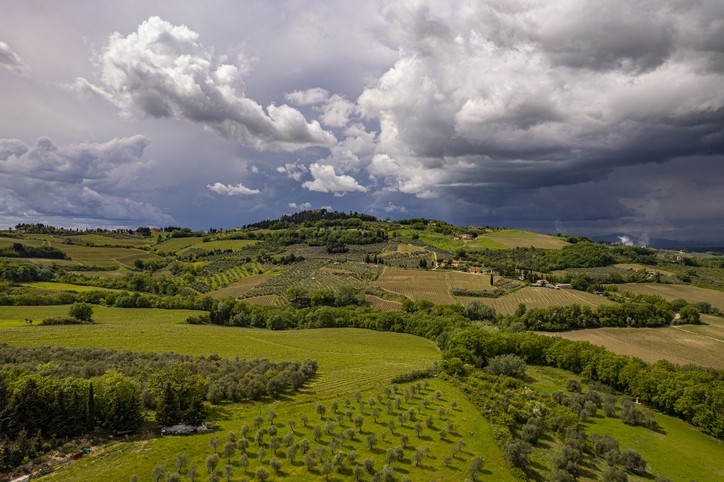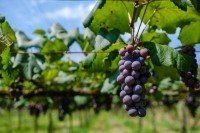Global wine production down 9.6% as extreme climatic conditions ‘severely impact’ vineyards

In 2023, global wine production is estimated at 237 mhl, marking a significant decrease of nearly 25 mhl (-9.6%) compared to 2022. It also marks a sharp decline on previous years: where production levels over the last four years had been consistent with the 20-year average.
“The sharp decline can be attributed to a confluence of adverse climatic events, including early frost, heavy rainfall, and drought, coupled with widespread fungal diseases,” said the OIV as it releases data for 2023. “These factors severely impacted harvest volumes across major wine-producing regions in both the Northern and Southern Hemispheres.”
Northern Hemisphere: a varied picture
Vinified production in the EU in 2023 is estimated at 144.5 mhl, which represents a sharp decrease of 10.6% (17 mhl) compared to 2022.
This places it as the second-lowest production volume recorded since the beginning of the century, only behind 2017’s output of 141 mhl.
Within the EU, the picture is varied, reflecting diverse climatic conditions experienced across major wine regions during the 2023 growing season.
France, which became the world’s leading wine producer in 2023, achieved an estimated volume of 48 mhl. Notably, this figure is not only 4.4% higher than in 2022 but also exceeds the country’s last five-year average by 8.3%.
Italy, in contrast, faced historically low production levels in 2023, with a notable 23.2% decrease, totalling 38.3 mhl. This marks the smallest production since 1950, attributed to heavy rainfall fostering downy mildew in central and southern regions, along with flood and hail damage.
Spain also experienced a notable decline, reaching its lowest production since 1995, with an estimated output of 28.3 mhl, down 20.8% from 2022 and 25.7% below the last five-year average. This downturn was primarily driven by severe drought and extreme temperatures impacting vineyards during the growing season.
2023 production | Change from 2022 | Percentage of global production | |
France | 48 mhl | +4.4% | 20.2% |
Italy | 38.3 mhl | -23.2% | 16.1% |
Spain | 28.3 mhl | -20.8% | 11.9% |
US | 24.3 mhl | +8.5% | 10.2% |
Chile | 11 mhl | -11.4% | 4.6% |
Australia | 9.6 mhl | -26.2% | 4.1% |
South Africa | 9.3 mhl | -10% | 3.9% |
Declines in other EU countries were also attributed to climatic challenges: such as in Germany (8.6 mhl, -3.8%/2022), Hungary (2.4 mhl, -2.1%/2022) and Austria (2.4 mhl, -6.5%/2022). In Greece (1.4 mhl, -34.4%/2022), the harvest was particularly low due to the heavy rainfalls during spring which caused downy mildew, followed by elevated temperatures and drought in summer months that strongly impacted the vines.
However, Portugal (7.5 mhl, +9.8%/2022) and Romania (4.6 mhl, +21.2%/2022) saw relatively large production volumes with strong growth on the previous year.
In Asia, China's wine production came in at 3.2 mhl, down 33% compared to the previous year.
In the US, wine production is estimated 24.3 mhl, 8.5% higher than in 2022 but in line with its five-year average. This relatively large production has been favored by cool temperatures and heavy winter rains in the Napa and Sonoma regions.
Southern Hemisphere: notable decline
In 2023, the world’s vineyard surface area stands at 7.2 million hectares, marking a slight decrease of 0.5% compared to 2022.
This decline signifies the third consecutive year of shrinking vineyard surfaces globally.
After two large production volumes in 2021 and 2022, the Southern Hemisphere experienced a notable decline in wine production in 2023, totaling 47 mhl, marking a 15.4% decrease from 2022 and a 13.2% drop from the last five-year average.
This represents the lowest production level since 2003, attributed to extreme climatic events across major wine-producing regions.
In 2023, Chile was the largest producer in South America, with wine production estimated at 11.0 mhl, 11.4% below 2022 production due to wildfires, droughts and flooding.
Argentina’s wine production fell to 8.8 mhl (-23.0%/2022), primarily due to spring frosts and hailstorms. This represents the lowest volume recorded since 1957.
Brazil, however, saw a strong year with a volume of 3.6 mhl, which is not only 12.1% above the previous year but also 31.4% above its last five-year average.
South Africa’s 2023 wine production is estimated at 9.3 mhl, a decrease of 10.0%. Fungal diseases, notably powdery and downy mildew, heavily impacted the harvest.
Australia faced a significant reduction in production to 9.6 mhl, down 26.2% from 2022. This decline was primarily attributed to adverse weather conditions, including persistent rainfall, unusually cold temperatures, and floods, exacerbated by the effects of La Niña. Inventory pressures also led to a reduction in yield.
Conversely, New Zealand’s production of 3.6 mhl saw positive growth compared to its last five-year average, despite a 5.8% decrease from 2022, indicating resilience amidst challenging conditions.
How will climate change affect wine production?
Climate change could create dramatic shifts in where wine is produced: making vineyards unsuitable in some regions - but opening up new opportunities in others.
California, for example, could see some regions become too hot and arid for wine - but Washington State and Oregon could become new wine regions.
More here about research with maps how the global distribution of vineyards is likely to change.



![Element[AL] launches its aluminum bottles in the US. Pic: Bogle Family Wines](/var/wrbm_gb_food_pharma/storage/images/_aliases/wrbm_medium/publications/food-beverage-nutrition/beveragedaily.com/article/2024/02/13/aluminum-wine-bottles-champion-sustainability-and-convenience-benefits/17117222-2-eng-GB/Aluminum-wine-bottles-champion-sustainability-and-convenience-benefits.png)







